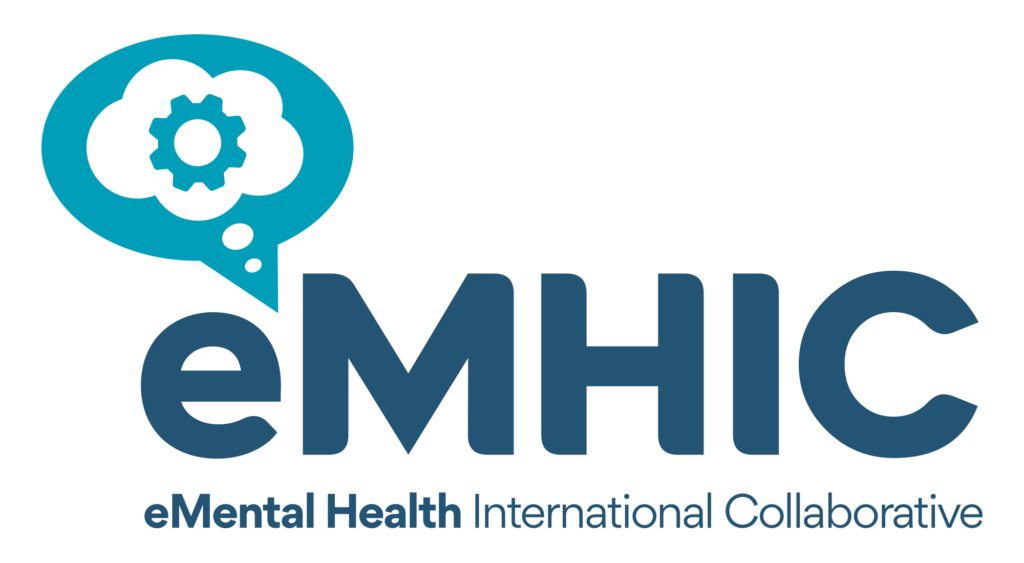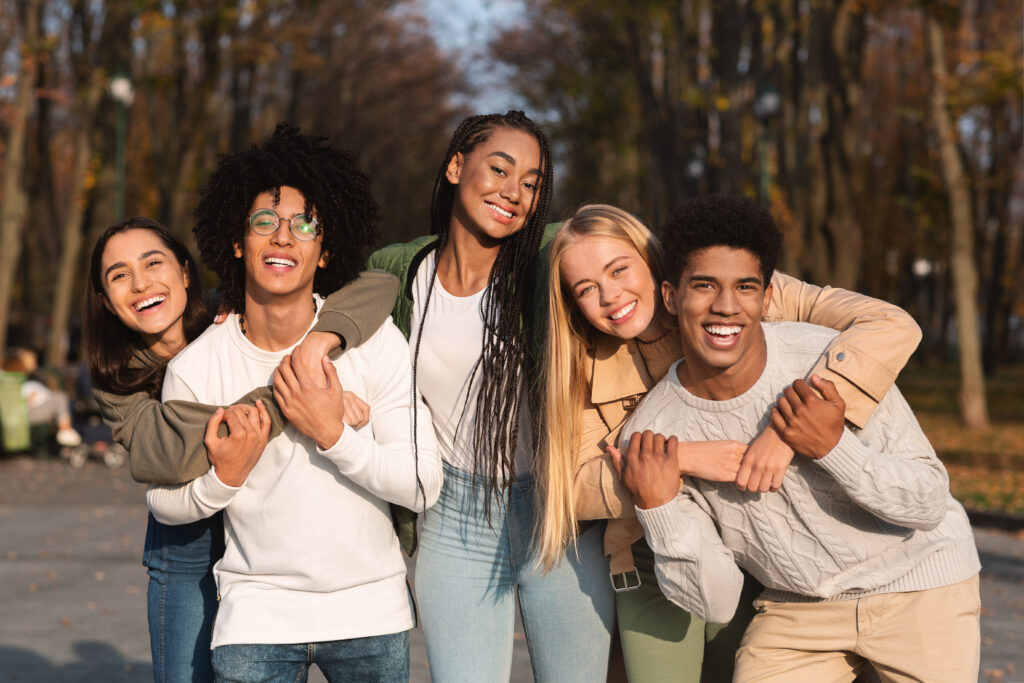KIDS HELP PHONE
Kids Help Phone (KHP) is Canada’s largest, 24/7, free, multilingual e-mental health resource for children and youth. Since 2020, KHP has supported young people nearly 19 million times. In 2019, to reach the more diverse mental health needs of young people, KHP began to build out new services including a novel peer-to-peer service. Launched in 2021, and co-developed with a national, bilingual pilot group of 266 diverse young people, this service is now operational in every province and territory. In this case study, we share how we built this innovative new service, both for — and with — Canada’s young people.
Why build a peer-to-peer service
For over 34 years, KHP demonstrated its commitment to improve youth access to mental health support, through innovation. When the organization began, we were the first national helpline to provide professional counselling directly to children and youth across Canada — based on the central belief that young people deserved a service built specifically for them. Over the years, innovation has remained central to our approach, and we have continued to evolve to reach even more young people. This has included many firsts: the first youth chat counselling service in Canada, one of the first youth mental health apps, Canada’s first 24/7 texting service and the first use of AI to triage conversations.
As youth and technology continue to change at a rapid pace, we have seen a need for more radical transformation as well as a need for the development of more sustainable, diverse service offerings. The reality is that (as it is in most other countries) in Canada, demand for mental health services far outstrips capacity with an estimated 70-75% of young people with mental health concerns not receiving appropriate care. Further, the COVID-19 pandemic had an unprecedented impact on youth help-seeking behaviours, increasing KHP demand alone by as much as 300% and driving countless more young people online — often in unsafe, unmoderated spaces — to connect with their peers, share difficult experiences, and seek needed support. Simultaneously, evidence for peer-to-peer approaches has been growing, demonstrating that youth both desire and gain unique mental health benefits from access to online peer support services.
In response to, and amid the COVID-19 pandemic, KHP designed and launched Canada’s first national, digital peer-to-peer service. Today, the Peer-to-Peer Community at Kids Help Phone meets young people where they’re at and allows youth to connect directly with each other, share advice and experiences, and give and receive anonymous support in a safe, moderated, and accessible online space. Most notably, this service was developed in partnership with a nation-wide pilot group of 266 diverse young people. As a result, this space was designed with youth, for youth, to ensure it stays safe, feels authentic, and has the meaningful impact that youth want and need. By combining scientific evidence, expert clinical guidance, and diverse youth perspectives, the Peer-to-Peer Community has filled a needed gap, growing to support over 260,000 interactions in its second year of implementation — a 46% increase from its first year.
Following their lead: How KHP built a peer-to-peer community
There are countless ways for an organization to approach innovation and the design of a new service. To build our novel, peer-to-peer platform, we drew upon emerging evidence, collaborated with international experts, and harnessed cutting-edge technologies; but most crucially, we designed our service by following the lead of young people. Rather than create a service for youth that may or may not meet their needs on the ground, we chose to intentionally create our service with 266 young people from diverse backgrounds to ensure it would be useful, relevant to varying realities and experiences, and meet the needs of youth across Canada.
Pilot Scope & Methods
Our co-design pilot period ran for six months in early 2021. In selecting pilot participants, we prioritized youth from often underrepresented populations (i.e. those with a mental health condition, BIPOC youth, 2SLGBTQ+ youth) to ensure inclusive representation across each of Canada’s provinces and territories. During the pilot, we conducted focus groups, surveys, and user testing to guide service development including its design, layout, purpose, and messaging capabilities.
Our pilot was designed to prioritize youth expertise and experiences; allowing youth to guide the purpose of this service, the role it would play alongside Kids Help Phone’s other offerings, and the design and layout of the resource once it was up and running. First, participants gave feedback to inform the initial scope and design of the service (e.g. what they most wanted from a digital space such as this, and what conversations they wanted to have). Then, participants were given access to a test site of the digital forums. Here, they were given space to connect over the forums, ask questions that were relevant to them, and give real advice to each other in real time. This allowed us to test assumptions about how the service would be used, and also to gather feedback on the appearance, layout, and experience of using our site prior to launch.
During this time, we also asked participants to share their apprehensions, fears, and any concerns they felt other youth might have about using a service such as this. These conversations were crucial to mitigating any concerns around confidentiality in advance of the launch. By working with youth, we were able to better align with their priorities and expectations. For example, guided by youth feedback, we opted to moderate usernames and content for identifying information.
Learnings
Broadly, our national pilot helped us feel confident that this service was one that young people felt was needed and one they wanted to use. It also helped us navigate complex questions that came up as a consequence of designing something completely from scratch. For example, staff knew that moderation of the service was key to creating a safe environment but feared that young people would find this unappealing. Our youth participants, however, strongly felt that moderation was necessary for feeling safe and reported that this was actually an attractive aspect of the Peer-to-Peer Community. Interestingly, pilot participants also reported concerns that over-moderation or “policing” replies could threaten the authenticity of the platform. This led us to create important guidelines for our moderators, one of which is to never revise a user’s language but instead to give feedback if revisions are needed to ensure user safety or anonymity. We know that these moderator guidelines are crucial to the success of the service to this day.
Other learnings from our pilot period included the following:
- Participants were extremely excited about the service and their involvement with its design. Many stated that this was needed for youth mental health in Canada and would be a great complement to existing services. Young people celebrated the potential of the service to help them feel less alone and give them an opportunity to share similar experiences with each other. Specifically, participants were excited to hear from someone else who’d “been there”.
- Participants found the service extremely beneficial to use, often in surprising ways. They noted that it was helpful to hear of others’ “success stories” and that seeing a range of experiences was therapeutic. They also noted that seeing other young people offer such supportive words to strangers provided hope and had a positive impact they didn’t expect to see before using the platform.
- Positive reception of the service and mixed reviews on early design. Reception of the first service design was generally positive but mixed. Many participants found it to be very clean, user friendly, simple, and warm, but some users thought the initial design was a little boring and unengaging. Led by this feedback, we made immediate design changes which boosted positive reception, prior to the public service launch.
Implications & looking ahead
In 2020, we saw increased demand, unprecedented need, and a gap in accessible, safe digital spaces for youth to connect and receive support. There were also no existing services available in Canada that seemed positioned to fill this gap. The answer was clear. We had to build it ourselves. But building a new service in this way also came with many questions that we couldn’t answer alone. Would young people use it? Would they want it? Would it meet their needs? To answer these questions and many more, we found immense strength in collaborating directly with young people to design a service that works for them.
Youth participation and co-design practices should be the standard approach for all service development and innovation. At KHP, we have now established a safe digital space for youth, informed by youth, that allows us to continue to meet young people where they’re at. We owe this success to the 266 young people who led this service development in 2021, and we continue to commit to being led by youth as we strive to ensure all young people have access to the mental health support they both need and deserve.




